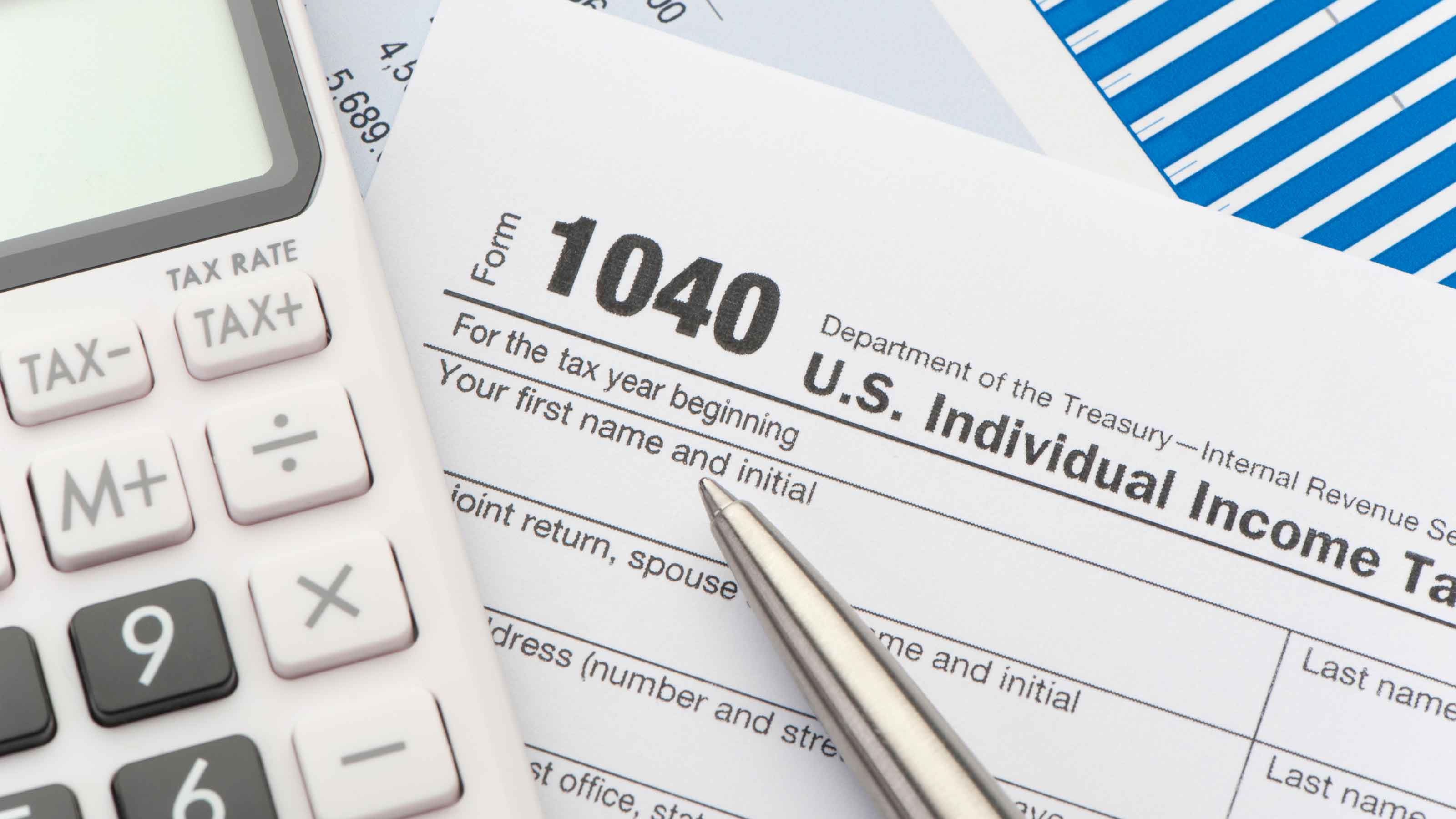How Can I Avoid the AMT?
We'll walk you through the form, line by line.

One of the best things that can be said about the alternative minimum tax is that Congress was successful in making it difficult to get around this tax. To avoid the AMT, you need to understand how the AMT differs from the regular tax system.
We'll walk through Form 6251, line by line, looking at the way the AMT handles different deductions and expenses, and wherever we see a tax-planning opportunity, we will suggest how to lessen the impact of the AMT.
Line 1, Standard Deduction: If you itemize, this line is the amount shown on line 41 of your 1040, which is your adjusted gross income (AGI) minus your itemized deductions (some of which are added back in on the following lines). If, on the other hand, you take the standard deduction instead, this line is solely your AGI from line 38 of the 1040 because you can't take any part of the standard deduction when calculating the AMT. So, if you took the standard deduction on your regular return, it is effectively added back into your income here.
From just $107.88 $24.99 for Kiplinger Personal Finance
Become a smarter, better informed investor. Subscribe from just $107.88 $24.99, plus get up to 4 Special Issues

Sign up for Kiplinger’s Free Newsletters
Profit and prosper with the best of expert advice on investing, taxes, retirement, personal finance and more - straight to your e-mail.
Profit and prosper with the best of expert advice - straight to your e-mail.
Also, in calculating the AMT you cannot take the deductions for personal exemptions. Because the amount on line 38 or 41 of the 1040 is used as the starting point for computing the AMT, the personal exemptions (which are claimed on line 43 of the 1040) are effectively added back into your income for AMT purposes. This is one of the reasons that married couples with children are strongly affected by the AMT. If you are a married couple with three children, you lose $17,500 ($3,500 x 5) in personal exemptions under the alternative minimum tax in 2008.
Line 2, Medical Expenses: If you itemize deductions, medical deductions are only allowed to the extent that they exceed 10 percent of adjusted gross income, rather than 7.5 percent under the regular tax system.
Suggestion: If your employer has a pre-tax medical deduction plan or cafeteria plan, sign up for it. You can reduce your salary to pay your medical expenses on a pre-tax basis, which will help you reduce both the AMT and your regular tax.
Line 3, Taxes: In calculating the AMT, you cannot take itemized deductions for state and local income tax, real estate taxes, and personal property taxes, even though these are deductible on your regular return.
Suggestion 1: In a year that you have to pay the AMT, don't bother prepaying real estate or fourth-quarter state estimated tax payments in December. You get no benefit from paying these taxes in a year that you are subject to the AMT.
Suggestion 2: Real estate tax and personal property taxes are not deductible for AMT if they are part of itemized deductions. Taxes deductible on a business schedule (Schedule C), rental schedule (Schedule E), or farm schedule (Schedule F or Form 4835) are allowed for the AMT.
- Perhaps you can qualify for a home office, which would allow you to deduct part of your home real estate tax on Schedule C.
- If you have a farm operation and use your car in your work, you could deduct the personal property tax on the car on Schedule F.
- If you have vacant arable land on which you are paying real estate tax, you could turn it into a farm rental and deduct the taxes on Form 4835.
[page break]
Line 4, Home Equity Interest: Home mortgage interest claimed as an itemized deduction is only deductible for the AMT if the loan was used to buy, build or improve your home. For regular tax purposes, interest on home equity mortgages up to $100,000 is deductible, even if the proceeds are used for personal purposes, such as buying a car or paying off credit card debt. So unless the home-equity loan proceeds were used to improve your home, the interest is added back for purposes of the AMT.
Suggestion: If you are subject to the AMT, there is no advantage to using your home equity line of credit to buy a car because the interest will not be deductible. You may be able to get a lower interest rate from a regular car loan. If the car is used in your business, you may be able to write off some of your auto loan interest as a business expense on Schedule C.
Line 5, Miscellaneous Itemized Deductions: Miscellaneous itemized deductions are not deductible for AMT purposes. Often generated by employee business expenses, these itemized deductions can save you a lot of money on your regular return. If so, when the AMT puts them back into your taxable income, you could face a big problem.
Suggestion 1: Employee business expenses (Form 2106) are incurred by employees, not self-employed individuals. These work-related expenses were not reimbursed in full by the employer. These expenses become miscellaneous deductions on Schedule A, Itemized Deductions, and can be deducted only to the extent that all miscellaneous deductions exceed 2% of your adjusted gross income. Only the excess amount can be deducted. If you are in this situation, ask your employer to start reimbursing you for your business expenses.
If your employer has a non-accountable business expense plan, encourage him or her to adopt an accountable plan. In a non-accountable plan, your employer gives you an expense advance check and you are not required to keep records of your purchases. The advance is included in your income, and you take your expenses as miscellaneous itemized deductions. In the AMT system, you are taxed on the expense advance, but can't take a deduction for the expenses.
With an accountable plan, you turn in your receipts to your employer and you must refund any expense advance not used. Because you are not taxed on the advance and you do not take a deduction for the expenses, you avoid being hit by AMT rules.
Suggestion 2: If you have employee business expenses that your employer refuses to reimburse, and you know that these expenses are causing you to pay the AMT, consider negotiating with your employer. You may be better off by having the employer pay some of these expenses in exchange for a lower salary. Your employer will save on payroll taxes, workers' compensation insurance, and in some cases liability insurance premiums, and you will reduce your taxable income and possibly avoid the AMT altogether.
[page break]
Line 6, Phaseout of Itemized Deductions: If you itemize and your adjusted gross income is more than $159,950 ($79,975 if you are married filing separately), you lose a portion of your itemized deductions. The good news is that since your itemized deductions are added back to your income for AMT purposes, you get to subtract this reduction when figuring your AMT.
Line 7, State Tax Refund: If you have a taxable state tax refund on your regular tax return, it does not count as taxable income for AMT purposes because you do not receive a corresponding deduction for state tax.
Line 8, Investment Interest: The investment interest deduction may be different for AMT purposes because it depends on whether you have taxable private activity bond interest (see line 11). If you do, you may have an additional deduction for investment interest.
Line 9, Depletion: You can calculate depletion from mining, oil, gas, timber or other similar activities for regular tax purposes using either the cost or percentage depletion method. For AMT, only the cost method is allowed.
Suggestion: If this line is generating AMT on your tax return, consider electing the cost method of depletion.
Line 11, Tax-exempt Interest: This line commonly has an entry, but the amount is usually not large enough to generate AMT on its own. Some tax-exempt interest, namely from private activity bonds, is not tax-exempt for AMT purposes. A private activity bond is a state or local bond issued to provide funds for private, nongovernmental activities such as building a sports stadium, industrial development, student loan financing, or low-income housing. These bonds are often issued by states, counties, or cities and are tax-exempt for regular federal tax, but not for the AMT. If you invest in mutual funds, the 1099 you get will list how much interest you received from private activity bonds. This amount is entered on Line 11 to show the income as taxable for AMT purposes.
Suggestion: If you are subject to the AMT, invest in tax-exempt bonds that are not private activity bonds. Many mutual fund companies have two listings of state bond funds, one that contains private activity bonds, and one that doesn't. Read the literature carefully.
Line 12, Section 1202 Exclusion: You can exclude from your income some portion of the gain on the sale of qualified small business stock held more than five years. The gain on the sale of this stock is 50 percent excludable for regular tax purposes, but 7% of the excluded gain is added back for AMT purposes.
Suggestion: In the year that you sell qualified small business stock, try to eliminate or reduce as many other AMT adjustments as possible to get the maximum gain exclusion on the sale of the stock.
Line 13, Incentive Stock Options: This line is another common problem for people affected by the AMT. If you exercise an incentive stock option (ISO) but do not sell the stock in the year of exercise, the transaction is not taxable that year for regular tax purposes.
However, the difference between the exercise price and the fair market value of the stock on the day of the exercise is an adjustment for AMT and appears on Line 13. For many people, this adjustment can be a very large number. Essentially, you are going to be taxed on a hypothetical profit (what you might have made if you sold the stock on the day you bought it.)
Example: You exercise incentive stock options (ISOs) to purchase 100 shares of stock at $3 per share and you decide to hold the stock as a long-term investment. The stock is trading at $33 per share on the day of the exercise. Line 13 on your Form 6251 is $3,000 [100 shares x ($33-$3 per share)].
Your basis in this stock is now $300 ($3 x 100) for regular tax purposes, but $3,300 ($33 x 100) for AMT purposes. When you later sell the stock, you will have an entry on Line 16, Disposition of Property Difference, to account for the difference in your tax basis for regular and AMT purposes.
Suggestion 1: If you exercise the ISOs in the previous example at $33 and the stock falls before the end of the current year, you can sell the stock and avoid the AMT. If the stock fell to $25 during the year of the exercise, you would be subject to regular tax on only $22 per share ($25-$3) and not be subject to the AMT adjustment at all.
Suggestion 2: When you exercise ISOs, always use tax planning software to forecast the tax consequences. You may need to sell some of the stock in the year of the exercise to pay the tax due.
[page break]
Line 14, Estates or Trusts: This line contains differences between AMT and regular tax deductions from estates or trusts. Unfortunately, decisions by the administrators of the estate or trust may be beyond your control.
Line 15, Electing Large Partnerships: An entry on this line comes from a partnership in which you are a partner. Other than disposing of the investment, which would have other tax ramifications, there is probably nothing you can do about an entry on this line.
Line 16, Disposition of Property Difference: The tax basis in assets that you sold may be different for regular and AMT purposes depending on the depreciation method you chose (see Line 17), or on your incentive stock options (see Line 13).
Line 17, Post-1986 Depreciation: On this line, you enter the depreciation difference for regular and AMT purposes. For AMT purposes, you generally must depreciate (deduct) business assets over a longer period of time than you can for regular tax purposes. This creates a difference between regular tax depreciation and AMT depreciation. This is an entry that does self-correct. By the time the asset is completely written off, you have received the same deduction for both regular and AMT purposes.
Suggestion: If you have an entry on this line, consider electing a slower depreciation method for your business assets, which could eliminate the AMT adjustment.
Line 18, Passive Activities: This line contains the differences between AMT and regular tax deductions for passive activities. This line usually relates to a difference in depreciation methods for rentals, partnerships or S Corporations.
Suggestion: If the adjustment is from a rental property, consider using slower depreciation methods for regular tax purposes to eliminate an entry on this line. If the adjustment is from a partnership or S Corporation, the depreciation methods are selected at the entity level and there is probably nothing you can do.
Line 19, Loss Limitations: You may have AMT or regular tax differences due to passive investments in partnerships or S Corporations. Depending on your percentage of ownership, you may discuss with the management of these investments any items that are generating AMT on your tax return to see if the AMT impact can be lessened in future years.
Line 20, Circulation Expenditures: This line relates to the difference between how newspaper or magazine circulation expenditures are deducted under both tax systems.
Suggestion: If you have an entry on this line, consider making an election under Internal Revenue Code (IRC) section 59(e) to amortize these expenses over three years for regular tax purposes. This will eliminate the entry on this line for AMT purposes.
Line 21, Long-Term Contracts: Long-term construction contractors are generally required to use the percentage of completion method of accounting for long-term contract revenue, rather than the completed-contract method. This is a timing difference that will reverse in later years.
Line 22, Mining Costs: Mining exploration and development costs may also generate an AMT adjustment unless you make an IRC section 59(e) election to write-off the costs over 10 years. Making the election eliminates an entry on this line.
Line 23, Research and Experimental Expenditures: This adjustment is related to a timing difference between deducting Research and Experimental Expenditures for regular and AMT purposes. You can eliminate this line entry if you make the IRC section 59(e) election to deduct the costs over ten years.
Line 24, Installment Sales: Installment sales of inventory items are not allowed for AMT purposes for sales entered into between August 16, 1986, and January 1, 1987. (Almost no one uses this line).
Line 25, Intangible Drilling Costs: This line relates to the difference in timing of the deductions for intangible drilling costs. You can make an election under IRC section 59(e) to write off intangible drilling costs over 60 months for regular tax purposes, and eliminate an entry on this line.
[page break]
Line 26, Other Adjustments: This line relates to any other income or deduction items that are affected by AMT differences, such as taxable IRA distributions, self-employed health insurance, IRA deductions, and other income-based calculations.
Having thrown so many items back into your income, you now get a small break. Your taxable income for AMT purposes is reduced by an exemption amount, which depends on your income and filing status. For 2008, the exemption amount for married couples filing jointly is $69,950 and $46,200 for individuals and heads of household. This exemption amount phases out as income increases.
Now you calculate the tentative minimum tax. You compare this figure to the tax you calculated under the regular tax system on Form 1040.The difference is the alternative minimum tax. You pay the tentative minimum tax or the regular tax, whichever is higher.
What happens to my tax credits?
If the calculation on Form 6251, Alternative Minimum Tax shows that your tentative minimum tax is less than your regular tax, you don't owe any AMT, but you may still be affected by the AMT in other ways.
Business credits. Because of the AMT, you may not be receiving all of your tax credits, such as the Low-Income Housing or Work Opportunity Credits. Your tentative minimum tax limits these credits and most other general business credits other than the energy credit because these credits cannot reduce the tax you pay below the tentative minimum tax.
If you have any of these credits, usually from a business entity or an investment, you should analyze lines 1-26 of Form 6251 to see what you can do to reduce your tentative minimum tax and allow more credits. Any general business credit not allowed may be carried back two years and carried forward 20 years.
Credit for paying the AMT
You get a tax credit for alternative minimum tax paid in a prior year. This credit, calculated on Form 8801, Credit for Prior Year Minimum Tax, calculates how much of the AMT was related to deferral items, which generate credit for future years, as opposed to exclusion items which are not deductible for AMT, and consequently are lost.
Certain items in lines 2 through 26 of the Form 6251 are simply not deductible for AMT purposes, such as taxes, home equity mortgage interest and miscellaneous deductions. Lines 2-5, 7-9, 11 and 12 are exclusion items. If you paid AMT based on entries on these lines, you will not receive a tax credit for AMT.
Other items create timing differences, such as depreciation differences between the two tax systems and the phantom income from exercising incentive stock options. These items will generate a credit on Form 8801 and reduce your taxes in future years.
Lines 13 through 26 are deferral items. An AMT credit may be generated based on the reversal of the timing difference of these items. For example, AMT depreciation methods may be slower than those for the regular tax, but you will eventually receive the same deduction. To calculate and report your AMT credit you need to fill out Form 8801, Credit for Prior Year Minimum Tax -- Individuals, Estates, and Trusts.
As part of the 2008 financial rescue law, Congress has approved major relief for taxpayers who incurred large AMT tax credit carryforwards due to the exercise of incentive stock options before the tech stock crash in 2000 and 2001. All tax, penalties and interest due on outstanding alternative minimum tax liabilities resulting from exercising incentive stock options will be abated. This will put a halt to IRS collection activities. Anyone who is still using up minimum tax credits from AMT paid in 2003 or before can burn them off over the next two years (2008 and 2009), no matter how high their income is. Prior law limited this relief for single filers with adjusted gross incomes above $156,400 and married filers with AGIs above $234,600. In addition, these credits are refundable.
How can I plan ahead for the AMT?
- Use tax-planning software, such as TurboTax (for which Kiplinger provides expert content), during the year to minimize your overall tax liability.
- Study Form 6251 each time you prepare your tax return to see how close you are to paying the AMT. Evaluate how close your tentative minimum tax (line 33) was to your regular tax (line 34). For information on Form 6251, see the Instructions.
- Check last year's return for any general business credits that are being carried forward. If there are some, they may be due to the Tentative Minimum Tax limit.
- If you exercise stock options during the year, see Incentive Stock Options for guidance on how the timing of the subsequent sale of stock can affect your AMT liability.
Profit and prosper with the best of Kiplinger's advice on investing, taxes, retirement, personal finance and much more. Delivered daily. Enter your email in the box and click Sign Me Up.

-
 Stocks Slip to Start Fed Week: Stock Market Today
Stocks Slip to Start Fed Week: Stock Market TodayWhile a rate cut is widely expected this week, uncertainty is building around the Fed's future plans for monetary policy.
-
 December Fed Meeting: Live Updates and Commentary
December Fed Meeting: Live Updates and CommentaryThe December Fed meeting is one of the last key economic events of 2025, with Wall Street closely watching what Chair Powell & Co. will do about interest rates.
-
 This Is Why Investors Shouldn't Romanticize Bitcoin
This Is Why Investors Shouldn't Romanticize BitcoinInvestors should treat bitcoin as the high-risk asset it is. A look at the data indicates a small portfolio allocation for most investors would be the safest.
-
 Kiplinger's Tax Map for Middle-Class Families: About Our Methodology
Kiplinger's Tax Map for Middle-Class Families: About Our Methodologystate tax The research behind our judgments.
-
 Retirees, Make These Midyear Moves to Cut Next Year's Tax Bill
Retirees, Make These Midyear Moves to Cut Next Year's Tax BillTax Breaks Save money next April by making these six hot-as-July tax moves.
-
 Estimated Payments or Withholding in Retirement? Here's Some Guidance
Estimated Payments or Withholding in Retirement? Here's Some GuidanceBudgeting You generally must pay taxes throughout the year on your retirement income. But it isn't always clear whether withholding or estimated tax payments is the best way to pay.
-
 How to Cut Your 2021 Tax Bill
How to Cut Your 2021 Tax BillTax Breaks Our guidance could help you claim a higher refund or reduce the amount you owe.
-
 Why This Tax Filing Season Could Be Ugly
Why This Tax Filing Season Could Be UglyCoronavirus and Your Money National Taxpayer Advocate Erin M. Collins warns the agency will continue to struggle with tight budgets and backlogs. Her advice: File electronically!
-
 Con Artists Target People Who Owe The IRS Money
Con Artists Target People Who Owe The IRS MoneyScams In one scheme, thieves will offer to "help" you pay back taxes, only to leave you on the hook for expensive fees in addition to the taxes.
-
 Cash-Rich States Lower Taxes
Cash-Rich States Lower TaxesTax Breaks The economic turnaround sparked a wave of cuts in state tax rates. But some say the efforts could backfire.
-
 The Financial Effects of Losing a Spouse
The Financial Effects of Losing a SpouseFinancial Planning Even amid grief, it's important to reassess your finances. With the loss of your spouse's income, you may find yourself in a lower tax bracket or that you qualify for new deductions or credits.